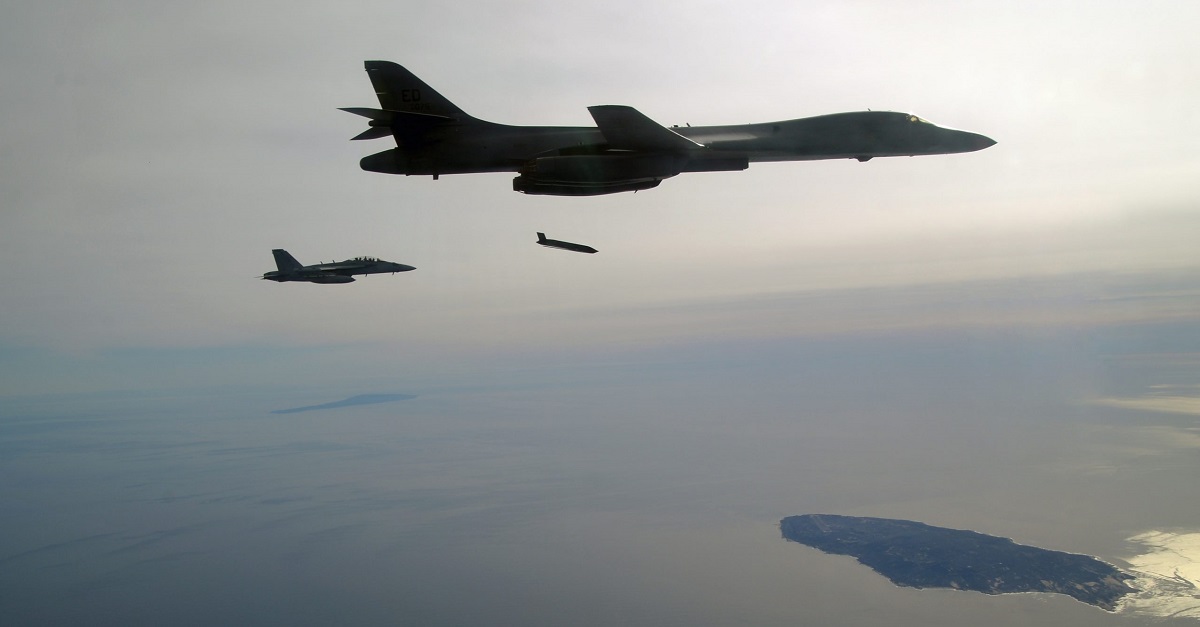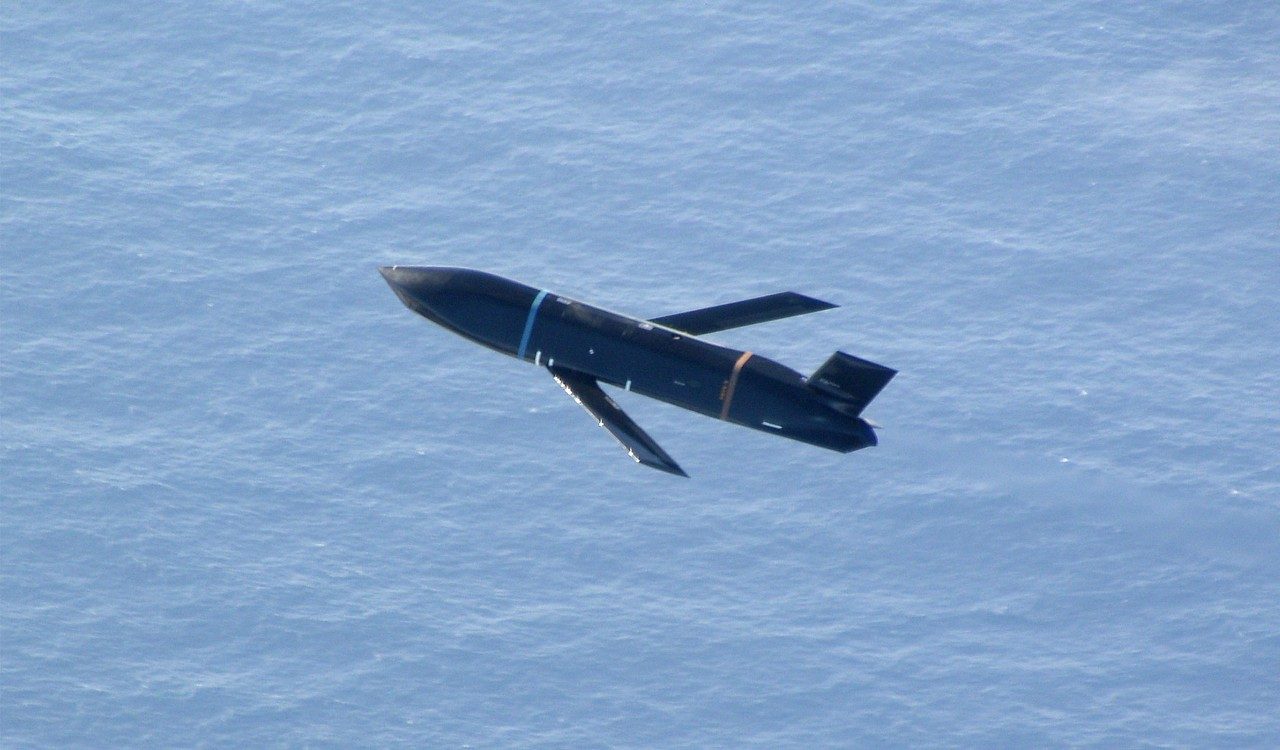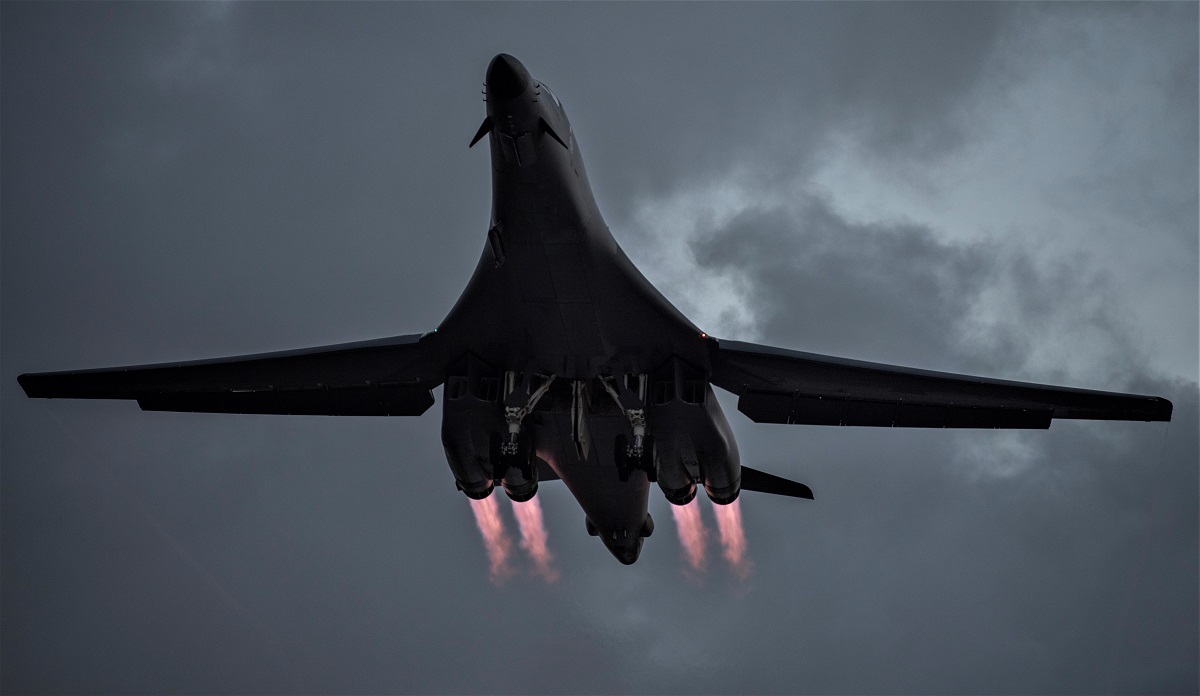The US wants to turn the B-1B Lancer bomber into a killer of Chinese aircraft carriers by arming the supersonic aircraft with 36 LRASM anti-ship missiles with a launch range of more than 900 kilometres

The US Air Force wants to turn the B-1B Lancer supersonic strategic bombers into aircraft carrier killers for the Chinese navy. To do this, specialists want to add anti-ship missiles to the aircraft.
Here's What We Know
The idea is for the B-1B Lancer to be able to carry 36 Long-Range Anti-Ship Missiles (LRASM). It is based on the JASSM-ER but uses satellite communications, allowing it to bypass enemy air defences. LRASM is reported to have a maximum launch range of over 900 kilometres.
The desire to arm the B-1B with three dozen LRASM missiles has its roots in the Arsenal Plane concept that emerged at the end of the last century. The idea is that military aircraft, including transport aircraft, could carry as many missiles as possible.
The Arsenal Plane concept gave rise to a technology called Rapid Dragon. It is a system for dropping long-range AGM-158B JASSM-ER cruise missiles on pallets from military transport aircraft.

The average age of the B-1B Lancer supersonic bombers is almost 35 years. The U.S. Air Force intends to retire the aircraft early in the next decade. The service will get the next-generation B-21 Raider nuclear bombers, but it will not be able to carry as many missiles as the B-1B.
During the Cold War, the B-52 Stratofortress flew with a dozen Harpoon anti-ship missiles. The F/A-18 Super Hornet deck fighter can now carry no more than two LRASMs, and the P-8A Poseidon anti-submarine aircraft can carry up to six missiles.
If the service can turn its idea into reality, a single B-1B Lancer will carry about twice as many anti-ship missiles as the Super Hornet, Stratofortress and Poseidon together. A group of five B-1B Lancer aircraft would be able to fire a salvo of 180 LRASM missiles.
Decades ago, the U.S. feared Soviet Tu-22 aircraft with AS-4 anti-ship missiles. That prompted the development of the Aegis combat system, which includes the SPY-1 radar with an active phased antenna array, and the F-14 Tomcat fighter got AIM-54 missiles.

Now this is the situation China finds itself in. A five B-1B Lancer with 180 LRASM missiles will be capable of sinking a Fujian-class aircraft carrier, four Type-055 and Type-052D destroyers, and one Type-054A frigate, even if Chinese air defences intercept 95% of the missiles. Installing LRASM on the external suspension of the B-1B Lancer would give the US Air Force one of the most powerful non-nuclear weapon systems in history.
Source: Popular Mechanics